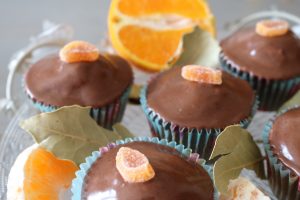I’ve had lots of people ask me about tips for making dairy free butter cream. The main complaints are often that the buttercream will separate, be greasy and colours will not be solid. I too have had these problems and trial and error has taught me what will work. The trick with buttercream is to use a hard butter substitute. A soft spread such as Vitalite or pure sunflower spread will lead to the mixture separating. If however, you use a hard margarine, (I recommend Stork perfect for biscuits and pastry which comes in a foil wrapper) this separation doesn’t occur and adding food colouring will result in a solid colour. It will also freeze with no problems which is useful if you are making a large batch of cupcakes.
For completeness, I have also included icing recipes although these are usually dairy free anyway.
Buttercream
Basic Buttercream
4oz Icing Sugar
2oz Stork
So long as you stick to this ratio of 2 to 1 icing sugar to stork you will make a good buttercream. You can adjust how much you make to however much you need for your recipe. If the mixture is a little stiff, its a good excuse to add some flavour as often these will soften the mix.
Adding Flavour:
Once you have made the basic recipe you can add any flavour you like.
Chocolate buttercream – mix a tsp of cocoa powder with a little bit of water to make a thick paste. Add this to the basic butter cream.
Coffee buttercream – as with the chocolate, simply mix 1 tsp of instant coffee with just enough boiling water to make a paste and add this into your buttercream.
Citrus – this includes flavours like lemon, orange and lime. The best way to get these flavours is to use freshly squeezed juice added to basic butter cream. About a tablespoon of juice should do. The buttercream will become soft so simply add a little more icing sugar to compensate.
Extracts – this is where you add some flavour extract to change the taste of the buttercream. It is the best way of getting flavours like vanilla and almond. Usually I would add about ½ tsp of extract. Make sure you keep trying it as you add so it doesn’t become too strong. As only a small amount of flavouring is added you shouldn’t need to add any extra icing sugar.
Adding colour:
I would recommend using a good quality colour if you want a nice solid, bright finish. The colours avaiable in supermarkets are fine if you want a pale pastel colour but if you want it bright and bold I recommend ProGel concentrated food colour. Its available at hobbycraft and although a little more expensive it lasts for ages as only the tiniest bit gives you bright colour.

Icing
Basic Icing:
When making icing I have always used a very much trial and error technique. 
Boil some water before you start as I find adding recently boiled water to mix icing helps leaves it smoother as the sugar dissolves better.
Start with about 250g of icing sugar and slowly add the water. You will need roughly 30mls. The end result you are looking for is icing thick enough to coat the back of a spoon without running off. Add the water little by little until you get to this stage.
If you add to much and the icing becomes too thin or runny, just add a bit more icing sugar till you get it right.
When making icing I always recommend making more than you think you will need. The reason for this is once you have added flavours and colours, if you run out half way through it is incredibly difficult to make a second batch to exactly the same colour.
Royal Icing:
This is an icing which incorporates egg whites to give a tough and glossy finish. Often you will find it decorating biscuits such as gingerbread men and on Christmas cakes.
Ingredients:
1lb Icing sugar
2 egg whites
Method:
Whisk the egg whites in a large bowl until they become frothy.
Add the icing sugar to the egg whites, a spoonful at a time, and fold in.
Beat the icing until it is very stiff and white and stands up in peaks
I have to say though, I have recently discovered silver spoon do a royal icing sugar which already has the egg incorporated and is a lot easier.
Adding flavour:
Chocolate Icing – for this I simply add a tbsp of cocoa to the icing sugar before I add the water, then make the icing by adding water till I get the desired consistency. It makes a lovely, soft chocolate icing that doesn’t go completely hard.

Citrus Icing – This method works for orange, lemon and lime. Instead of adding water to the icing sugar, add freshly squeezed juice instead. It gives a lovely, fresh intense flavour that doesn’t have that strange aftertaste that some flavour extracts can have.
You can always combine the two techniques to make a delicious chocolate orange icing.
Adding colour
Getting a good colour is easier for straight icing than for buttercream so any food colouring you have will work. If you are using the professional colours I recommended for buttercream, I suggest putting a little colour on the end of a cocktail stick then add it by dipping in the cocktail stick. This prevents adding too much colour. Its much easier to build to the right colour slowly as if its too bright you cant take it back out.


Thanks a bunch for sharing this with all of us you actually recognise what you’re speaking about! Bookmarked. Please additionally seek advice from my web site =). We may have a hyperlink alternate contract between us!
very good submit, i actually love this website, keep on it